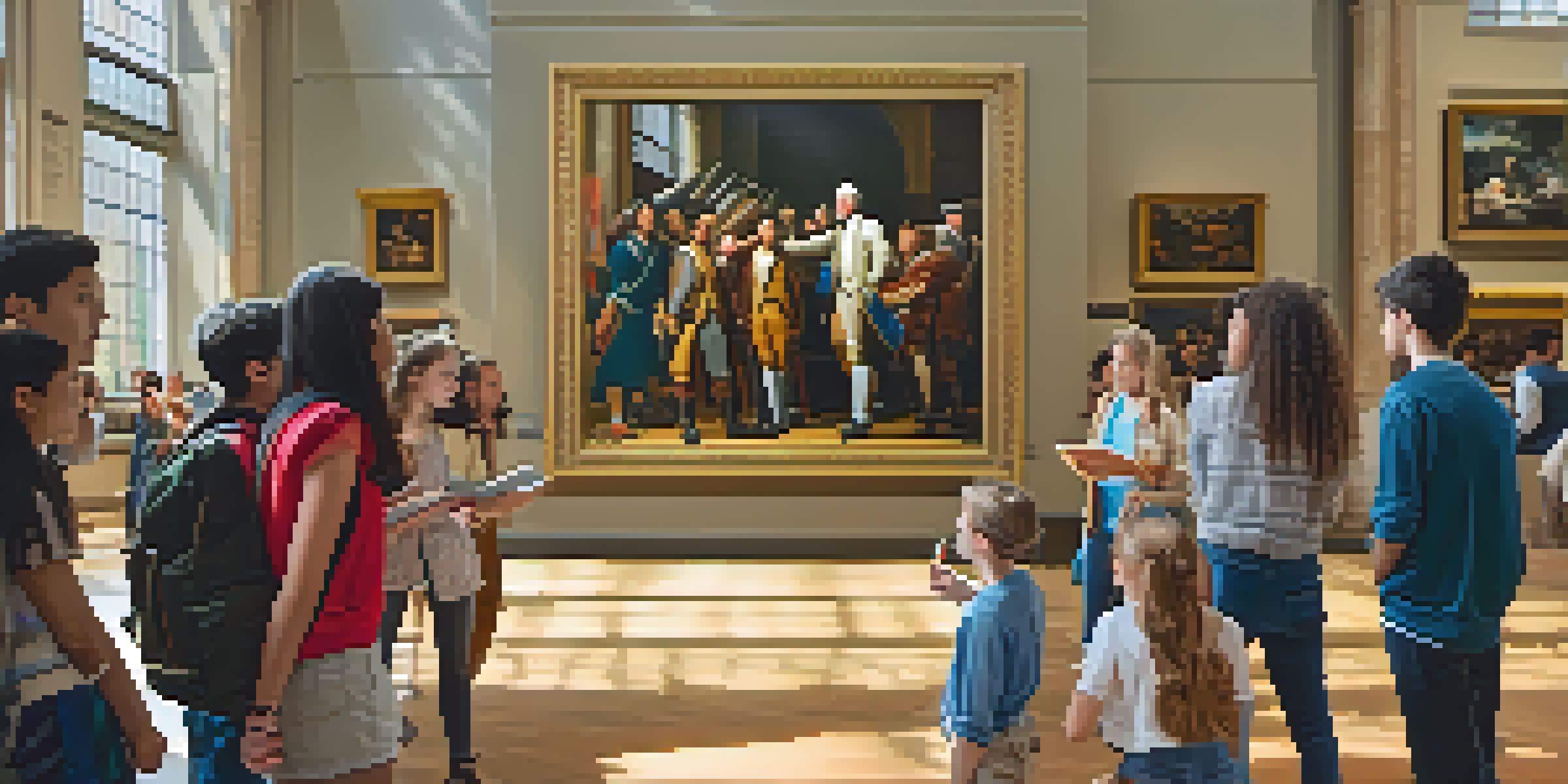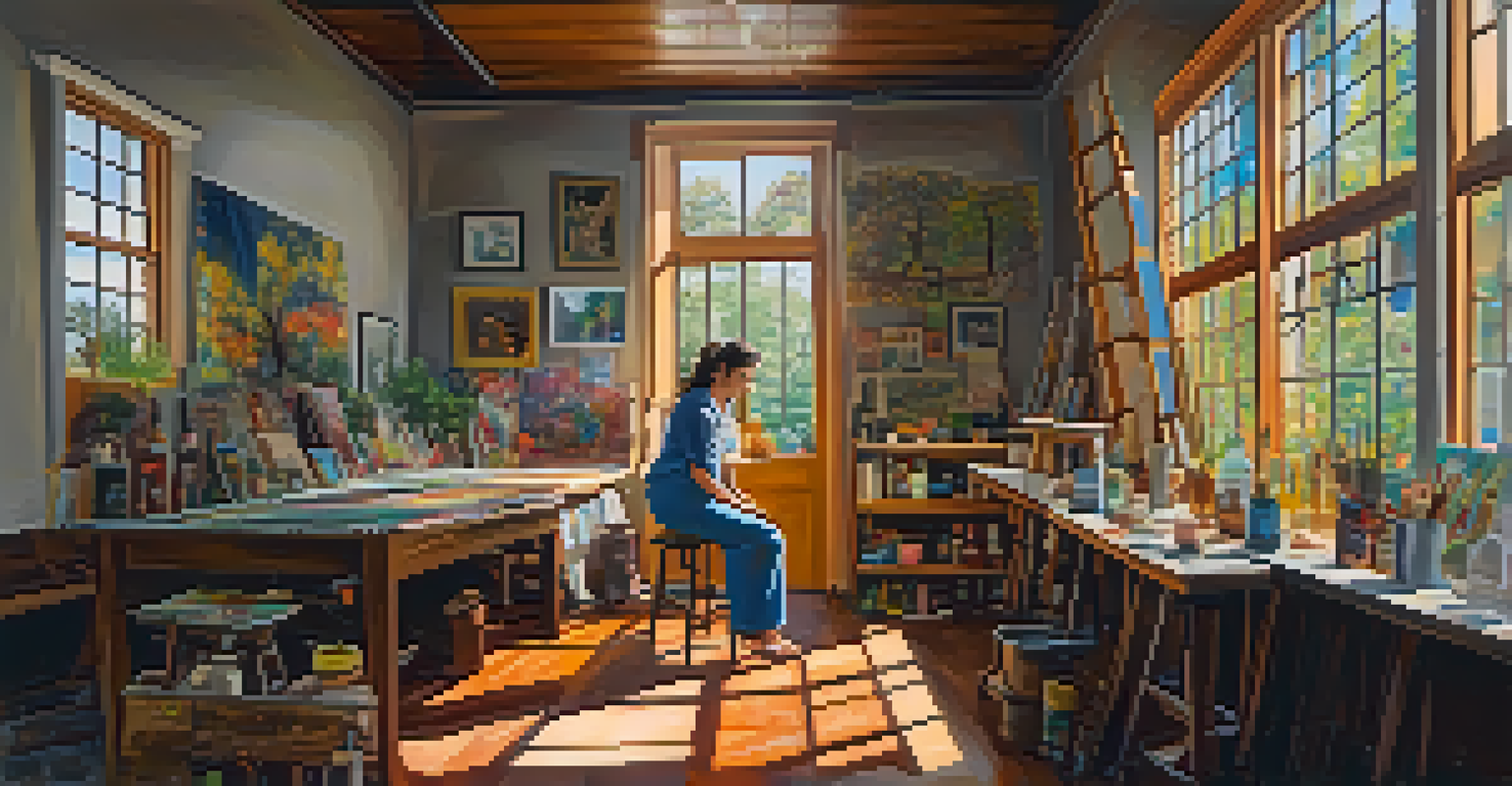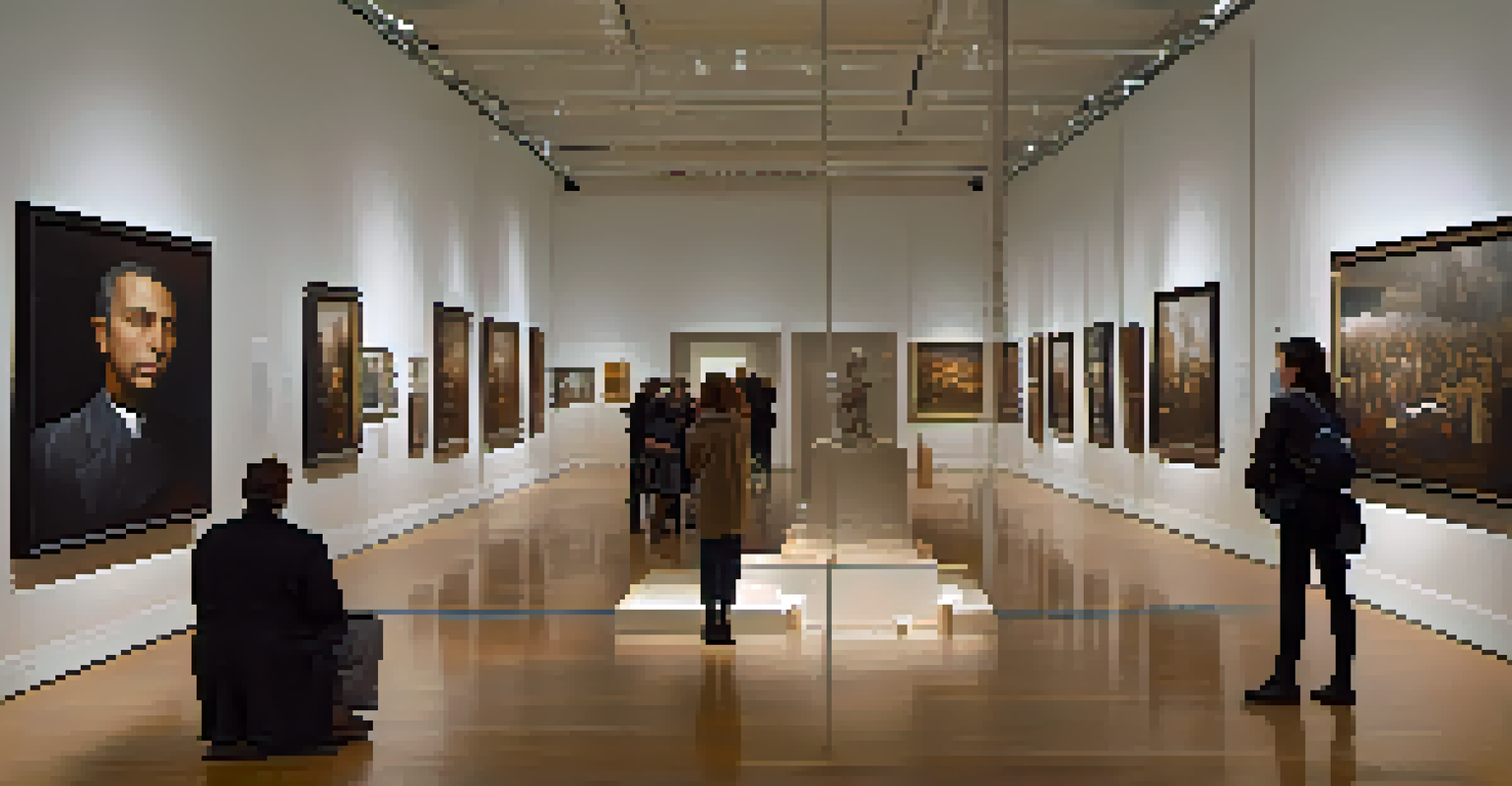Art and History: Combining Educational Tours for Impact

Understanding the Importance of Art in History
Art is not just a visual experience; it's a lens through which we can understand history. Each piece of art reflects the society and culture of its time, offering insights into the values, beliefs, and struggles of people long ago. For example, the works of the Renaissance period reveal a shift towards humanism, showcasing the evolving relationship between humanity and the divine.
Art is the most beautiful of all lies.
By studying art, we can gain a deeper appreciation of historical contexts, making events more relatable and engaging. Imagine standing in front of a famous painting, like Van Gogh's 'Starry Night,' and pondering the artist's emotional state during its creation. Such reflections can spark conversations about mental health and creativity, connecting past and present.
Moreover, art can serve as a gateway to explore historical narratives that are often overlooked. Indigenous art, for instance, tells stories of resilience and survival, allowing us to learn about cultures and histories that may not be included in traditional textbooks.
The Role of Educational Tours in Learning
Educational tours provide firsthand experiences that enhance learning in ways that reading cannot. When students visit a museum or historical site, they step into the shoes of those who lived through significant events. This immersive experience fosters a deeper understanding and retention of knowledge.

For instance, consider a group of students visiting the Gettysburg battlefield. Standing on the very ground where pivotal moments of the Civil War occurred allows them to grasp the stakes involved in a way that a textbook simply cannot convey. The emotional weight of such experiences often leads to more profound discussions and reflections.
Art Reflects Historical Context
Art serves as a lens through which we can understand the values and struggles of societies throughout history.
Additionally, educational tours encourage curiosity. When students see artifacts or art pieces up close, they're more likely to ask questions and seek answers, igniting a desire for further exploration. This natural curiosity can lead to lifelong learning, as they develop skills to analyze and interpret the world around them.
Integrating Art and History in Tour Programs
Combining art and history in educational tours can create a richer learning experience. For example, a tour of the Louvre could incorporate the historical significance of the French Revolution alongside the masterpieces housed there. This integration allows students to see how art was used as a form of expression during tumultuous times.
History is the version of past events that people have decided to agree upon.
Moreover, such programs can highlight the interconnectedness of different disciplines. By examining how historical events influence artistic movements, students learn to think critically about the world. A discussion on how World War I impacted Dadaism can show students the profound effects of societal upheaval on creativity.
This blended approach not only enhances understanding but also nurtures creativity. Students are encouraged to express their interpretations through art projects, merging their historical knowledge with personal insights, leading to a more holistic educational experience.
The Impact of Local Art on Historical Understanding
Exploring local art during educational tours can provide a unique perspective on history. Local artists often reflect the culture, struggles, and achievements of their communities in their work. By examining these pieces, students can uncover narratives that are relevant to their lives today.
For example, a tour through a city’s historical district may include stops at local galleries featuring artists who address contemporary issues through their lens of history. This not only grounds learning in their own community but also fosters a sense of pride and connection to their heritage.
Educational Tours Enhance Learning
Experiential learning through educational tours fosters deeper understanding and engagement with historical events.
Furthermore, engaging with local artists during tours can inspire students to consider their roles within their communities. They may be motivated to create their own art that reflects their experiences, encouraging a dialogue that bridges past and present.
Fostering Empathy Through Art and History
Art has a unique ability to evoke emotions, making it a powerful tool for fostering empathy. When students engage with art that depicts historical events or societal issues, they often find themselves connecting with the experiences of others. This emotional engagement can lead to a greater understanding of diverse perspectives.
For instance, a documentary film about the Holocaust paired with visits to related art exhibits allows students to confront the harsh realities of that time. Witnessing the artistry that emerged from such pain can create a profound emotional response, encouraging students to think critically about the importance of tolerance and understanding.
By cultivating empathy through these experiences, educational tours can inspire students to become advocates for positive change in their communities. Understanding the struggles of others can motivate them to take action, whether through community service or social justice initiatives.
Challenges and Solutions in Organizing Tours
While educational tours can be transformative, organizing them comes with its challenges. Budget constraints, logistical issues, and varying levels of student engagement can hinder the effectiveness of these programs. However, with careful planning and creativity, these obstacles can be overcome.
For instance, partnering with local museums or cultural organizations can help reduce costs while providing expert knowledge and resources. Additionally, incorporating technology, such as virtual tours, can make art and history accessible to all students, regardless of location or budget.
Empathy Through Art and History
Art's emotional impact can cultivate empathy, encouraging students to understand diverse perspectives and advocate for change.
Moreover, fostering student involvement in the planning process can increase engagement. Allowing them to choose specific themes or sites can create a sense of ownership, making the tour more meaningful and impactful.
The Future of Art and History Education
As education continues to evolve, the integration of art and history will remain vital. Emerging technologies, such as virtual and augmented reality, offer exciting opportunities to enhance educational tours. Imagine students exploring ancient civilizations through immersive experiences that bring history to life in their classrooms.
Furthermore, the growing emphasis on interdisciplinary learning supports the blending of art and history. Educational institutions are increasingly recognizing the value of teaching students how to think critically across subjects, preparing them for a complex world where creativity and analytical skills are essential.

Ultimately, the future of art and history education lies in its ability to engage and inspire students. By fostering a love for learning through innovative approaches, we can empower the next generation to appreciate the rich tapestry of human experience.